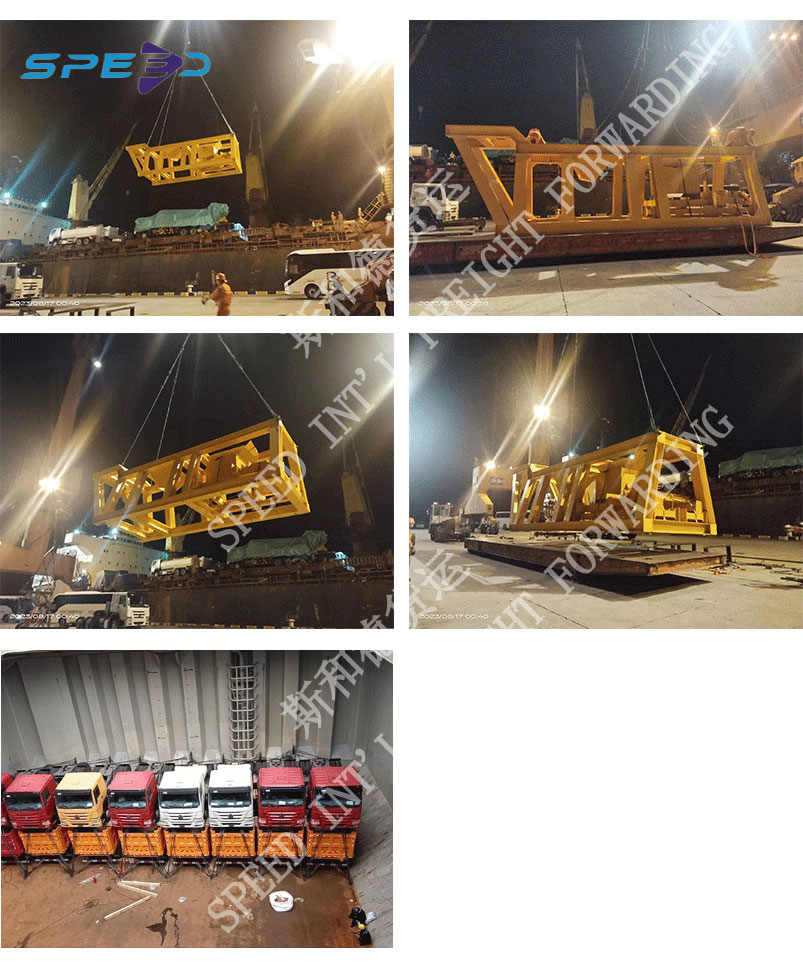Characteristics of Out of Gauge Container
2024-07-28
An out of gauge (OOG) container is a type of shipping container that carries cargo exceeding the standard dimensions of regular containers. These items are typically oversized or irregularly shaped, requiring special handling, equipment, and transport arrangements. Here’s a detailed look at OOG containers:
Key Characteristics
1. Irregular Dimensions: Cargo extends beyond the dimensions of standard containers (20ft, 40ft, etc.), either in height, width, or length.
2. Specialized Handling: Requires unique loading, unloading, and securing methods due to its size and shape.
3. Types of Containers Used:
- Flat Rack Containers: Open sides, sometimes collapsible ends, ideal for wide or tall cargo.
- Open Top Containers: No roof, covered with a tarp, suitable for tall items.
- Platform Containers: Completely flat with no sides or top, used for very large or heavy cargo.
Common Uses
1. Industrial Equipment: Transporting machinery, vehicles, and construction equipment.
2. Large Components: Moving large pipes, wind turbine parts, and other large construction materials.
3. Project Cargo: Shipping components for large-scale projects like oil rigs, bridges, or industrial plants.
Benefits
1. Flexibility: Can transport cargo that doesn't fit into standard containers.
2. Cost-Effective: Reduces the need for multiple shipments by allowing large items to be transported in one go.
3. Versatility: Suitable for a variety of oversized or irregularly shaped goods.
Challenges
1. Higher Costs: Often more expensive due to the need for special handling, equipment, and sometimes even permits.
2. Limited Availability: Not as readily available as standard containers, may require advance booking.
3. Complex Logistics: Requires careful planning and coordination to ensure safe and efficient transport.
Handling and Transport Tips
1. Secure Properly: Ensure the cargo is securely fastened to avoid movement during transport. Use chains, straps, and other securing devices.
2. Follow Regulations: Comply with all local and international regulations regarding the transport of oversized cargo.
3. Insurance: Consider additional insurance due to the increased risk associated with transporting OOG cargo.
4. Specialized Carriers: Use carriers and freight forwarders experienced in handling OOG cargo to ensure proper care and compliance.
Steps for Transporting OOG Cargo
1. Assessment: Measure the dimensions and weight of the cargo to determine the best type of OOG container.
2. Planning: Plan the route, considering any height, width, or weight restrictions along the way.
3. Permits: Obtain necessary permits for transporting oversized cargo, especially if crossing state or country borders.
4. Loading: Use appropriate equipment like cranes or forklifts for safe loading and unloading.
5. Securing: Properly secure the cargo to prevent any movement during transit.
6. Monitoring: Continuously monitor the transport to address any issues that may arise during the journey.
Popular OOG Cargo Carriers
1. Maersk Line: Offers extensive OOG cargo services with specialized equipment.
2. MSC (Mediterranean Shipping Company): Provides a range of options for oversized and heavy cargo.
3. CMA CGM: Known for handling complex and oversized cargo shipments.
4. Hapag-Lloyd: Experienced in transporting a variety of OOG cargo types.
By understanding the specifics of out of gauge containers and following best practices, you can ensure that your oversized cargo is transported safely and efficiently.



